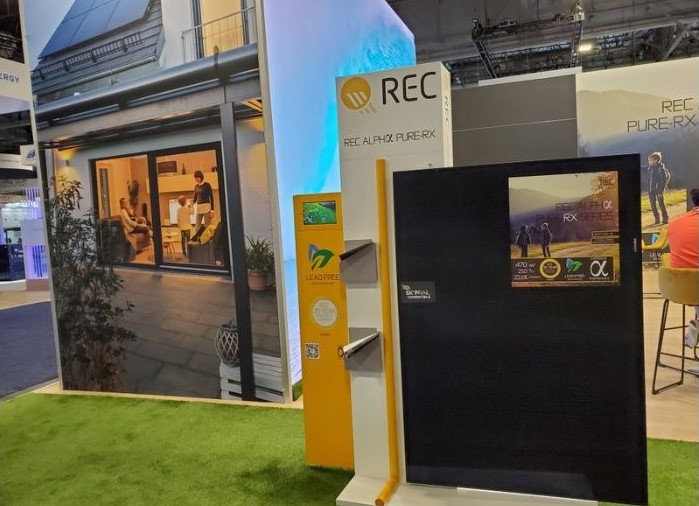REC said the Alpha Pure-RX series, which is based on the company’s heterojunction solar cell technology (HJT), is the highest power class residential solar panel that it has yet produced with a power density of 226 W/m2.
The Alpha Pure-RX is available in three versions, with power ratings ranging from 450 W to 470 W, and efficiencies of 21.6% to 22.6%. The modules are made with 80 heterojunction, half-cut monocrystalline solar cells and have a maximum system voltage of 1,000 V.
The modules have open-circuit voltages ranging between 65.1 V and 65.6 V, short-circuit currents ranging from 8.81 A to 8.95 A, can operate within a temperature range of -40 C to 85 C, and have a power temperature coefficient of -0.24% per degree Celsius.
All three panels in the series measure 1,728 mm × 1,205 mm × 30 mm and weigh 23.2 kg. They feature a 3.2 mm solar glass with anti-reflective treatment, a black polymer backsheet, an anodized aluminium frame, and an IP68-rated junction box.
REC said the four-part junction box design makes the module a good performer in shady conditions and it is also designed to withstand weather extremes – including Australia’s hot climate.
“These panels perform better under low light and hot days offering higher power generation with a guaranteed power output of at least 92% at year 25,” the company said.
REC said the Alpha Pure-RX series will be showcased at the All-Energy conference in Melbourne next week when the manufacturer will also unveil its Alpha Pro M panel, a HJT solar panel targeted at commercial and industrial projects.
Gus Paviani, REC’s head of Asia Pacific and Japan, said the Alpha Pro M is the highest power class solar panel available in the market with a power output of up to 640 Wp and efficiencies of 21.8% to 22.9%.
“The REC Alpha family delivers top-quality, high-performance solar panels for homeowners, businesses and now for commercial and industrial project markets,” he said.
The manufacturer said the Alpha Pure-R panels are available to order now with the Alpha Pure-RX and Alpha Pro M panels expected to be available in Australia and New Zealand in the first quarter of 2024.
This content is protected by copyright and may not be reused. If you want to cooperate with us and would like to reuse some of our content, please contact: editors@pv-magazine.com.




1 comment
By submitting this form you agree to pv magazine using your data for the purposes of publishing your comment.
Your personal data will only be disclosed or otherwise transmitted to third parties for the purposes of spam filtering or if this is necessary for technical maintenance of the website. Any other transfer to third parties will not take place unless this is justified on the basis of applicable data protection regulations or if pv magazine is legally obliged to do so.
You may revoke this consent at any time with effect for the future, in which case your personal data will be deleted immediately. Otherwise, your data will be deleted if pv magazine has processed your request or the purpose of data storage is fulfilled.
Further information on data privacy can be found in our Data Protection Policy.